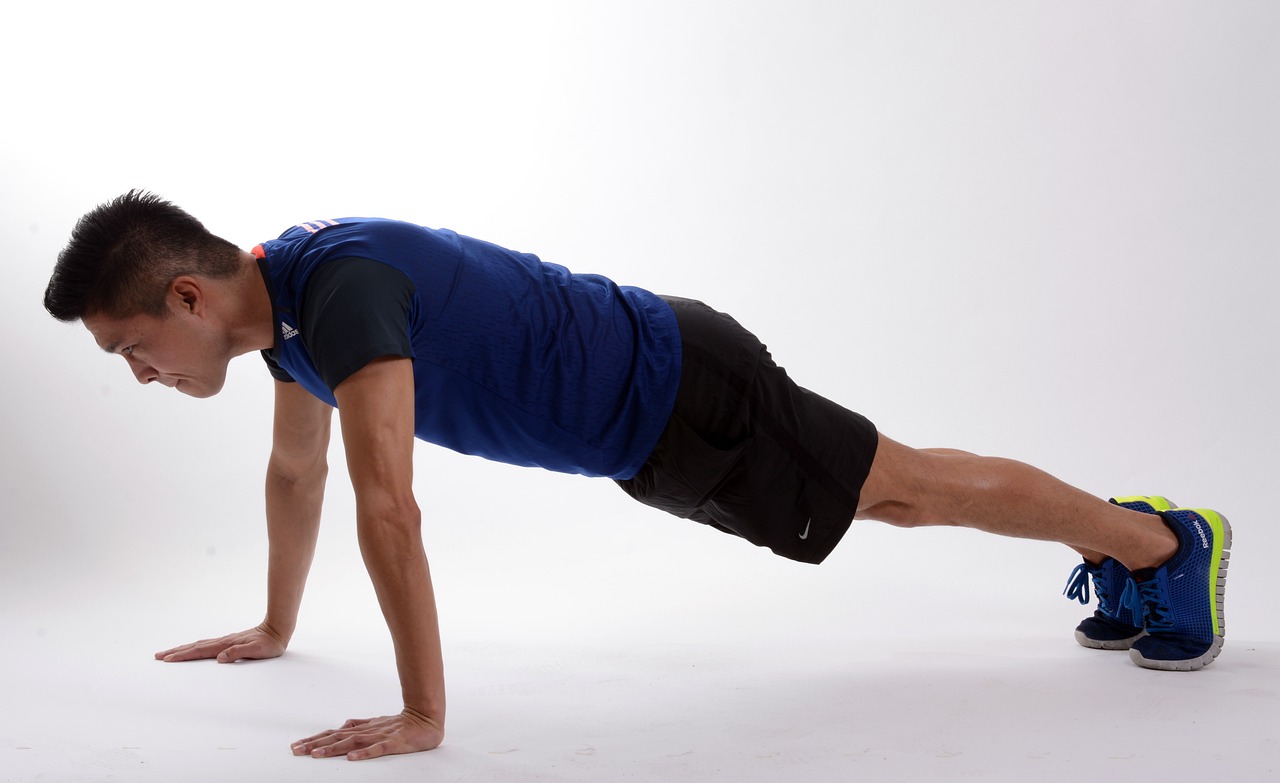The Press-up Tutorial
Many of us will do press-ups at some time in our training life. Some of us will enjoy them, some will hate them. Others will think of them as a necessary evil in the aim to improve upper body strength. In this article, Body zone fitness centre explains why this simple exercise can be so effective for beginners and exercise junkies alike.
The press-up incorporates the use of many muscle groups all working in a coordinated manner to achieve the desired result. Not only are you getting a workout for your Triceps, Pecs and Shoulders, but the core muscles around your midsection are also working to stabilise the body throughout this motion.
The exercise can be performed with the minimal amount of equipment (maybe a mat if your kneeling on a hard floor), and is adjustable for beginners right up to the super fit.
The easiest version will be with the knees on the floor at a right angle to your body, and the arms slightly in front of you, a little bit wider than your shoulders. Then move your chest down towards the floor while keeping your stomach tight and your back in a neutral curve.
The further you move the knees back, the harder the exercise becomes. This is until you reach the point where your knees are off the ground and you are balancing with your hands at the front and your toes at the back. This is known as the full press-up.
There are many variations on the full press-up and the degree of difficulty can be adjusted depending upon what part of the body you are targeting and the type of exercise you are trying to do. Once you are comfortable with the full press-up, here are a few ideas you can try to vary the exercise and the effect on different muscle groups:
1. To make all the muscles work harder, slow down the motion by going up and down in four movements. The movement would go like this, halfway down (pause) then fully down, halfway up (pause) then fully up. This method removes the natural momentum of the exercise and causes the muscles to ‘fire up’ twice in each repetition instead of once.
2. To increase the workload on the triceps, simply bring the hands closer together in the middle. As you become stronger, move the hands closer and closer together until your thumbs and forefingers are touching together to make a diamond shape in the middle. The down phase of the press-up will be easier than the up phase, due to the fact that the small triceps will be working almost in isolation to raise your bodyweight.
3. To make the pectoral muscles work harder simply move the arms wider apart, whilst maintaing the full range of movement up and down.
4. If you want to get really good definition on those shoulders then this time we can spread the arms and change the angle of movement from side to side. This will develop great strength in the supporting shoulder muscles and help to protect the joint from a common injury suffered by many sports enthusiast (rotator cuff).
Once we have mastered the basic movements above, many fall into the common mistake of simply increasing the number of press-ups over a period of time. Psychologically it feels good to start off at say ten press-ups and progress to the point where we can do over a hundred in one go. However, at this point we have switched from a strength exercise to an endurance exercise. If our goal is to improve upper body strength then its time to increase the difficulty and reduce the numbers.
This is where we can start to have ‘fun’ with our press-ups and ensure that they never become boring. The demonstration below will show how, by simply changing the angle of the joints, or the range of movement, the humble press-up takes on a whole new persona and starts to hit muscles that maybe we didn’t even know were there. We will see how your core muscles are used to stabilise and coordinate movement through the body. It will also demonstrate some of the more dynamic movements that can be used to generate explosive power.
In summary, whether you are a beginner or a fitness nut who has been training for years and years. The press-up has a place in everyone’s strength training regime. It is flexible, can be done almost anywhere, requires no equipment, can work all of the major muscles in your upper body, and most of all its free…..
So if you aren’t already doing press-ups as a regular part of your strength training, then the question is WHY NOT?

